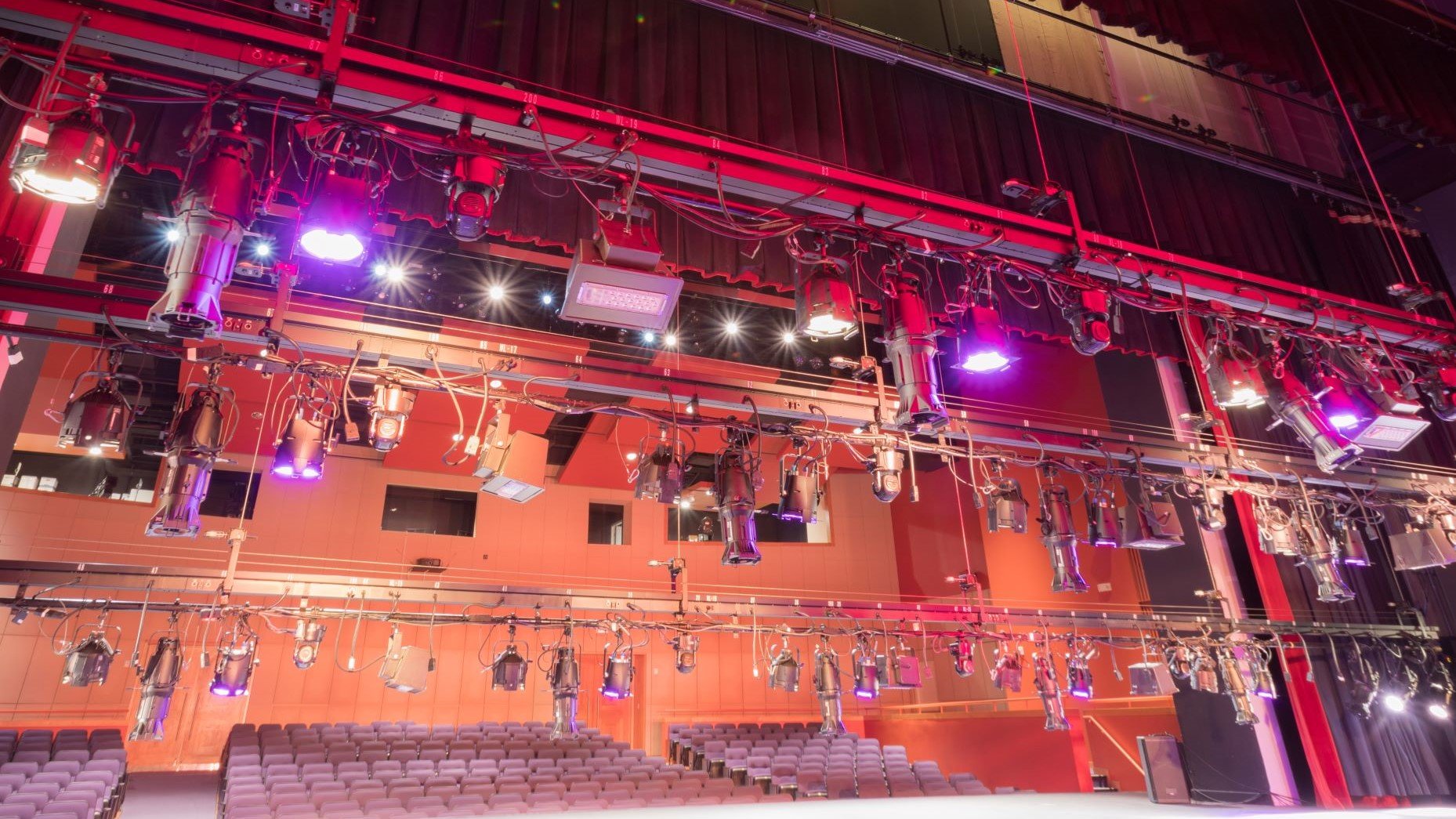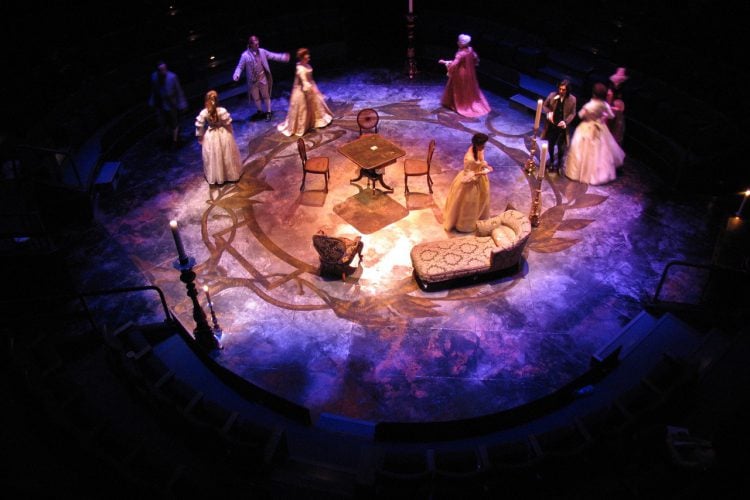Winter in England means it’s getting closer to the holiday season. It means shorter days and longer nights. It means wrapping up warm against the cold. It also means mince pies (my favorite), mulled wine (not my favorite), and festive light trails. These gained popularity during lockdown as it was almost the only activity that you could do that was socially distanced, and they continue to be a popular holiday season attraction. One of these trails is located at the Bedgebury Pinetum in Sussex and I have been the lighting designer on this trail for three years.
Festive light trail
It’s one of my favorite jobs of the year. What could be better than spending a few weeks in a forest making things look pretty? The design process starts around May where we all get together with the Producing Team and Forestry England and we walk the route that the trail will follow that year. The trail is a combination of lighting artist installations, son et Lumiere-type presentations, landscape lighting and general lighting to the footpaths and other public areas such as catering and ticketing. Once the route has been agreed, then the design process starts – one which culminates in more than 40 separate lighting layouts and details.
As we walk around, we identify the ideal locations for the installations. Once these have been placed, I start to fill in the rest of the lighting scheme.
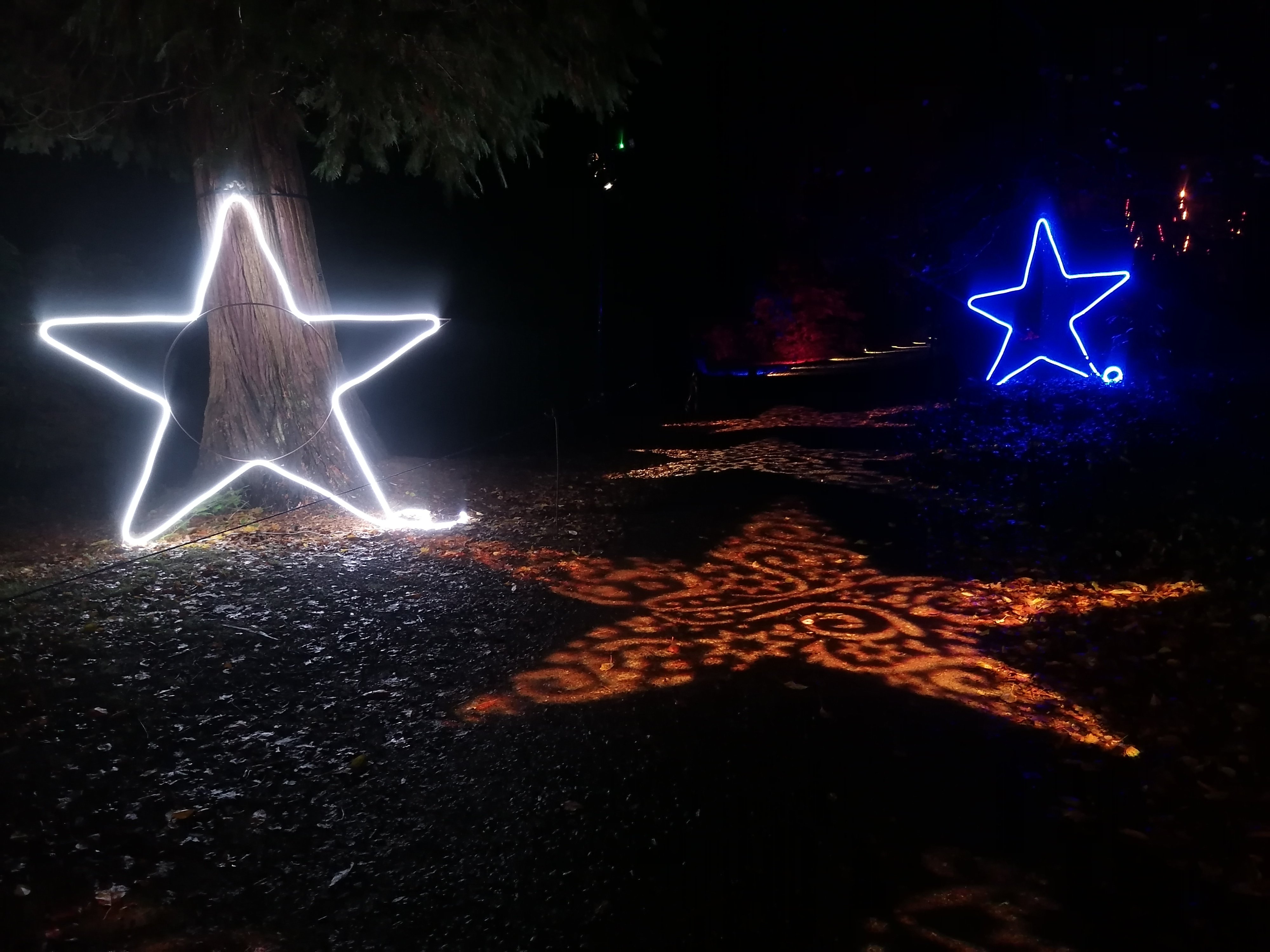
Tungsten vs. LED
The first year that I was involved, it was an almost entirely tungsten-based rig, with PAR64s, 56s, and ETC Source Four profiles, and a token peppering of some LED units. Over the years, for obvious reasons, this has changed and its now almost entirely LED. We do still have a number of tungsten Source Four fixtures on the trail too. I use these for the ‘gobo walks’ where I need the crisp definition of the gobos to create the look for that particular section. I do not mean to imply that LED profiles do not offer crisp gobo projection. But, what happens when the units are outdoors in the cold is that condensation forms on the lenses overnight. We need the heat of the tungsten lamps to evaporate this, otherwise the gobos never appear to be in sharp focus. There is not enough heat in the beam of an LED profile to burn off all the condensation. Where we are able to use LED, of course, we do. In addition to the energy savings (and reduction in the amount of diesel we need for the generators), this adds in the ability to have more color control without the need for the running crew to be changing gels every few days, but it also means that it is much easier to introduce dynamic design elements into the overall scheme. But, introducing dynamic elements meant that there needed to be a means of control. In addition to the 600-plus lighting instruments used for the project and several thousand kilometers of cable, I chose to use Eos to program the various light sequences that make up the festive light trail.
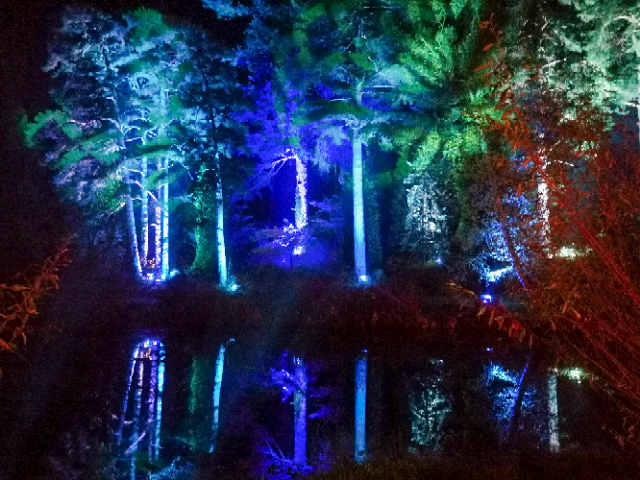
Eos: the obvious choice
Eos was the obvious choice for this project. We would program the show components on a full-size console and then use a Puck for show playback. Several of the installations are run with timecode, something that Eos handles beautifully. We are essentially turning the forest into a themed attraction, so being able to play shows back reliably and consistently is very important.
Working outdoors in the UK winter has its challenges, rain being one of them. It was a particularly wet season this year which always keeps things interesting. We had a portable gazebo on the back of our buggy and we could drive from location to location and program the sequences no matter what the weather – you can’t let the rain stop you, or you would never get it done.
Programming for the zones
Working together with programmer David Ayton, we programmed the lighting sequences for the seven dynamic zones over four nights. We had some pre-production time to get ourselves ready and get some rough shapes into the console, but most of the programming was done as soon as it got dark enough for us to hit the trail.
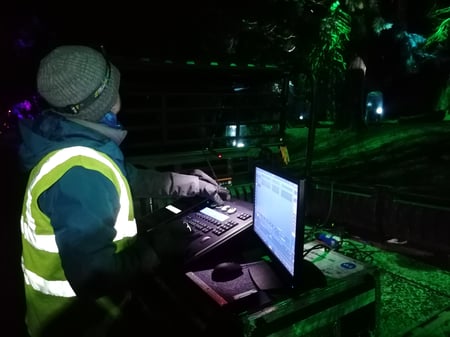

Due to the length of the trail and number of separate installations, I would often leave David to program one area while I went on ahead to get the focus completed on the other parts of the trail. In addition to the installations and general landscape lighting, there are several zones that are identified as being ‘LD moments’ – a section of the trail where the site lighting designer can really have some fun. One such area is called ‘Shadowlands’. It’s a really a simple idea – it is based on high school physics and the principles of additive color mixing. We light the footpath using clusters of red, green, and blue LED floods. On the approach to the path, it appears to be just a floodlit section, but as soon as you enter the space, your shadows splinter into a rainbow of color. I love watching the expressions of people as they realize what is happening here - they really seem to enjoy this.
Another LD Moment is a zone called ‘Komorebi’, which is the Japanese term for ‘dappled light through the trees’. Here, the lighting was rigged into the tops of the tree canopy about 10 meters (32 feet) high, using the natural break-up effect of the light passing through the branches to create the lighting looks. Usually trees are up-lit, and in fact a large number of them on this project are – it’s the easiest thing to do. Rigging the lighting up in the treetops (which we had to get specialist tree climbers to do for us) meant that we were able to create an effect similar to that created during the day when sunlight is doing the job for us.
This zone required timecode as the lighting was synchronized to the audio track, a piece I had commissioned for the installation. This zone was programmed on a console and then played back using a Puck and QLab. The console was used for the programming and the Puck and Gadget live in the woods with the rest of the tech (housed in suitable dry environments, of course) for the seven weeks that the trail is open.

Guest experience
Lighting festive trails is more than just lights on trees. You have to be aware of the overall guest experience as they move through the route and we often find ourselves moving lights around to get them out of the visual picture, which can be tricky. One thing you don’t want to be worrying about is control. There really was no other choice for me – it just had to be Eos. It’s a platform I am comfortable with, programming with timecode is really easy, and the small form factor of the Puck makes it suitable for hiding away in the forest where it reliably plays back the sequences we have programmed.
Now, where are those mince pies?




